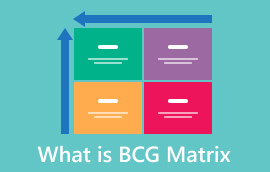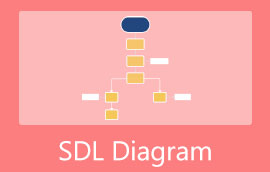Value Chain Model - Meaning, How to Do It, Template (with Example)
Value is subjective in life yet objective in business. Each business aims to gain a competitive advantage. Successful companies know that every decision has an innate value. Yet, making a strategy and using these opportunities is not a simple task to do. Hence, this is where value chain analysis comes in. In this article, we’ll discuss what value chain analysis is. We have also provided a value chain analysis example, template, and steps to do it. Further, we introduce a tool that will assist you in making a diagram. With that, keep reading to gain the essential details about it.

- Part 1. What is Value Chain Analysis
- Part 2. Value Chain Analysis Example & Template
- Part 3. How to Do a Value Chain Analysis
- Part 4. FAQs About Value Chain Analysis
Part 1. What is Value Chain Analysis
Value Chain Analysis helps businesses improve every step in their products or services production. It involves making the product or delivering a service from start to finish. Businesses divide it into two ways—primary activities and secondary (or support) activities. Thus, it is a way to examine each of those activities. The analysis checks cost, value, and how to optimize them to keep with the company's plan. It also studies how these activities connect.
Professor Michael E. Porter from Harvard Business School is known for introducing the concept of a value chain. He did this in his 1985 book, The Competitive Advantage. Now, you have an idea about this analysis. In the next section, let’s have a value chain analysis example and template.
Part 2. Value Chain Analysis Example & Template
Consider McDonald's, which aims to offer affordable food. Value Chain Analysis helps them find ways to improve and add value to what they offer. Here's a look at its cost leadership strategy.
Primary Activities
Inbound Logistics
McDonald's chooses low-cost suppliers for their food materials, like veggies, meat, and coffee.
Operations
McDonald's isn't just one big company. But a bunch of smaller ones are owned by different people. There are over 39,000 McDonald's restaurants everywhere.
Outbound Logistics
Instead of fancy restaurants, McDonald's is all about quick service. You order at the counter, serve yourself, or go through the drive-thru.
Marketing and Sales
McDonald's tells people about their food through ads. It could be in magazines, on social media, and big signs by the road.
Services
McDonald's wants to achieve high-quality customer service. Thus, they train their workers well and give them good things like benefits. In that way, customers will have a good time when they visit.
Secondary (Support) Activities
Firm Infrastructure
McDonald's has top bosses and regional managers. They are the ones who look after the company and deal with legal matters.
Human Resources
They hire people for both office and restaurant jobs. They pay them by the hour or with a salary. While also offering help with education costs to attract good workers.
Technology Development
They use touch-screen kiosks to make ordering and work faster.
Procurement
McDonald's uses a digital company called Jaggaer to connect with important suppliers all around the world.
That’s it. You have the McDonald’s value chain analysis. Now, take a look at its diagram sample below to understand it with ease.

Get a complete McDonald’s value chain analysis.
Also, here’s a value chain analysis template that you can use to create your own.

Get a detailed value chain analysis template.
Part 3. How to Do a Value Chain Analysis
Here are the general steps to do a value chain analysis:
Step #1. Determine all value chain activities.
As mentioned above, the value chain consists of primary and secondary activities. So, list all the steps involved in making your product. You start with the main ones and then look at the supporting ones. Make sure to explain each step thoroughly.
Step #2. Analyze the cost and value of each activity.
The team making the value chain analysis should think about how each step helps customers and the business. Check if it helps you reach your goal of being better than your competitors. Then, look at the costs. Is the activity laborious? How much do the materials cost? Asking these questions will show which steps are worth it and which aren't. This is how we find where to make things better.
Step #3. Check your competitor’s value chain.
Look at what your competition is doing in their steps to make things. A value chain analysis makes you better than them. So, keep this info a secret. You probably won't find a detailed view of what your competitors do in all their steps.
Step #4. Acknowledge your customer’s perception of value.
Customer’s perception of your product or service is the most important factor for your competitive advantage. Thus, you have to acknowledge what they think of what your business offers. Also, remember that customers are always right. To do a complete analysis, conduct methods to learn your customer’s perceptions. You can do surveys that will allow you to ask and know what they think.
Step #5. Identify opportunities to decide on a competitive advantage.
When the analysis is complete, the primary stakeholders can see the overview of their business. They can look at where they can excel and what improvements can be made. Then, begin with the small changes that make a big difference. Once you've figured them out, you can work on the bigger problems that slow things down. This analysis helps businesses understand how to do things better. The main purpose is to make customers satisfied and earn more profits.
How to Make Value Chain Diagram with MindOnMap
In making any type of diagram, MindOnMap is a dependable tool you can use. Definitely, you can also create a value chain analysis chart with it. So, MindOnMap is a comprehensive and free web-based diagram maker. You can access it on various popular browsers like Google Chrome, Edge, Safari, and more. It also offers several diagram templates that you can select from. With it, you can create an organizational chart, treemap, fishbone diagram, and so on.
Moreover, it provides various shapes and themes to create a personalized chart. One of the best features of the tool is that it auto-saves your work. It means whatever changes you make, the tool will save it for you. Another thing is that it offers a collaboration feature. It lets you work with your colleagues and peers simultaneously. Last but not least, MindOnMap is available offline. It also has an app version that you can download on your Windows or Mac PC. Begin creating your value chain analysis diagram by following the guide below.
First of all, navigate to the official site of MindOnMap. Once there, choose from the Free Download or Create Online buttons. When you’ve selected, create an account to fully access the tool.
Secure Download
Secure Download
After that, you’ll see a different layout from the main interface. In this tutorial, we will use the Flowchart option. Since it is the best way to show a value chain analysis.

Next, customize your value chain analysis diagram. You can start by choosing the shapes that you want to use. Then, add the texts that you need. Optionally, you can also select a theme for your diagram.

Sharing the diagram with your teammates to work with them is optional. To do it, click the Share button at the top-right corner of the tool’s interface. Then, you can set the Valid Period and Password to enhance security. Now, hit the Copy Link button.

When you’re satisfied, start exporting your value chain analysis diagram. Execute it by clicking the Export button and choosing an output format. Finally, wait until the process is finished.

Further Reading
Part 4. FAQs About Value Chain Analysis
What is a value chain analysis in simple terms?
In simple terms, value chain analysis helps find areas to improve within a company's activities. It's a way for businesses to understand and improve their whole process from start to finish.
What are the 5 primary activities of a value chain?
A value chain consists of 5 primary activities. These are the inbound operations, operations, outbound logistics, marketing and sales, and service.
What does the value chain tell us?
The value chain tells us how a company creates and delivers its products or services. It helps us understand where the company can improve and be more efficient.
Conclusion
All things considered, you have learned the value chain analysis and how to do it. Not only that, value chain mapping is also made easier through the best tool. A diagram is indeed an essential way to better understand the analysis. Yet, the template and example wouldn’t be made possible without MindOnMap. It offers a straightforward way to create your desired diagram. At the same time, it is suitable for both beginners and professionals.










